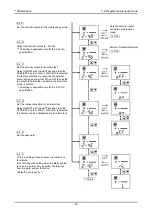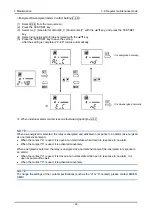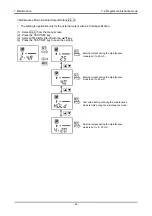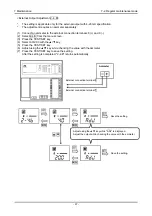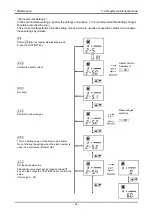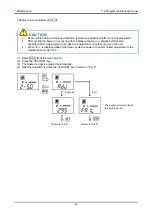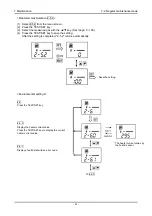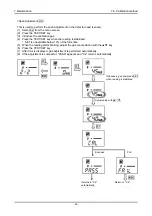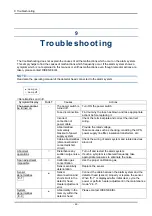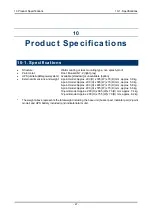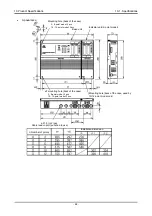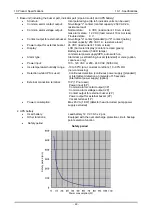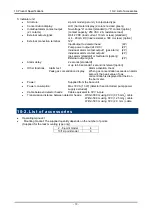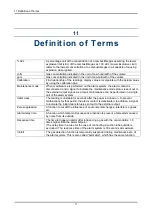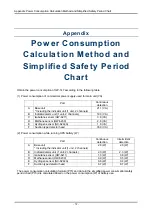
9 Troubleshooting
- 65 -
9
Troubleshooting
The troubleshooting does not explain the causes of all the malfunctions which occur on the alarm system.
This simply helps to find the causes of malfunctions which frequently occur. If the alarm system shows a
symptom which is not explained in this manual, or still has malfunctions even though remedial actions are
taken, please contact RIKEN KEIKI.
NOTE
Read also the operating manual of the detector head connected to the alarm system.
<Abnormalities on Unit>
Symptom/Display FAULT
Causes
Actions
The power cannot
be turned on.
-
The power switch is
turned off.
Turn ON the power switch.
Fuse disconnection
Find out why the fuse has blown and take appropriate
actions before replacing it.
Incorrect
connection of
power cable
Check the terminal plate and correct the incorrect
wiring.
Abnormalities/
momentary
blackout of power
supply system
Provide the rated voltage.
Take measures such as checking or adding the UPS,
power supply line filter, insulation transformer, etc.
Cable abnormalities
(disconnection/not
connected/short
circuit)
Check the wiring of alarm system and related devices
around it.
Abnormal
operations
○
Disturbances by
sudden surge noise,
etc.
Turn off and restart the alarm system.
If such a symptom is observed frequently, take
appropriate measures to eliminate the noise.
Span adjustment
impossible
○
Calibration gas
concentration
Use the proper calibration gas.
Sensor sensitivity
deterioration
Replace the sensor.
Sensor
abnormalities
E-1
●
Sensor
disconnection and
short-circuit in the
detector head
Heater adjustment
error
Connect the cable between the alarm system and the
detector head (sensor) properly or replace the sensor.
When "E-1" is displayed after initial clear, cycle the
power or perform heater adjustment in the maintenance
mode "2-5.0".
System
abnormalities
E-9
●
Abnormality in the
memory within the
detector head
Please contact RIKEN KEIKI.
●
: Lamp on
○
: Lamp off



